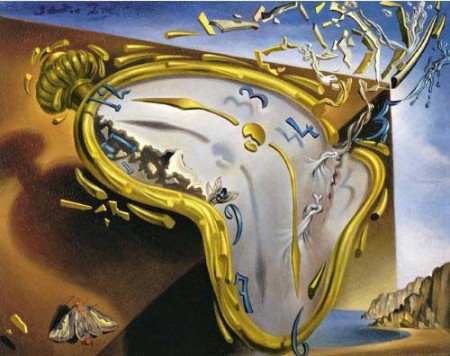Sequel of the preceding post The Warped Science of Interstellar (3/6)
In november 2014, the Hollywood blockbuster and science-fiction movie Interstellar was released on screens and much mediatic excitation arose about it.
This is the fourth of a series of 6 posts devoted to the analysis of some of the scientific aspects of the film, adapted from a paper I published last spring in Inference : International Review of Science.
A HUGE TIME DILATION
The elasticity of time is a major consequence of relativity theory, according to which time runs differently for two observers with a relative acceleration – or, from the Equivalence Principle, moving in gravitational fields of different intensities. This well-known phenomenon, checked experimentally to high accuracy, is called « time dilation ».

Thus, close to the event horizon of a black hole, where the gravitational field is huge, time dilation is also huge, because the clocks will be strongly slowed down compared to farther clocks. This is one of the most stunning elements of the scenario of Interstellar : on the water planet so close to Gargantua, it is claimed that 1 hour in the planet’s reference frame corresponds to 7 years in an observer’s reference frame far from the black hole (for instance on Earth). This corresponds to a time dilation factor of 60,000. Although the time dilation tends to infinity when a clock tends to the event horizon (this is precisely why no signal can leave it to reach any external observer), at first sight a time dilation as large as 60,000 seems impossible for a planet orbiting the black hole on a stable orbit.
As explained by Thorne in his popular book, such a large time dilation was a « non-negotiable » request of the film director, for the needs of the story. Intuitively, even an expert in general relativity would estimate impossible to reconcile an enormous time differential with a planet skimming up the event horizon and safely enduring the correspondingly enormous gravitational forces. However Thorne did a few hours of calculations and came to the conclusion that in fact it was marginally possible (although very unlikely). The key point is the black hole’s spin. A rotating black hole, described by the Kerr metric, behaves rather differently from a static one, described by the Schwarzschild metric. The time dilation equation derived from the Kerr metric takes the form:
1 – (dτ/dt)2 = 2GMr/c2rho2, where rho2 = r2 + (J/Mc)2cos2θ.
